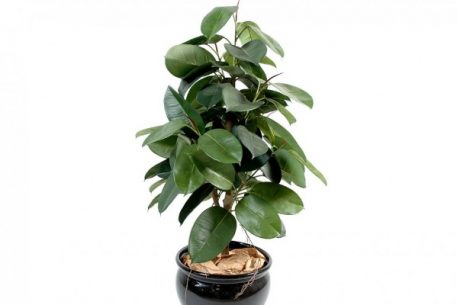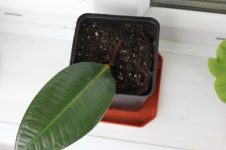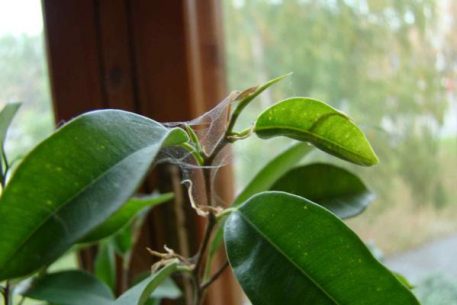Ficus Robusta is an unpretentious plant with leathery glossy leaves of large size, which are its main decoration. The rate of its development and growth depends on the conditions of detention. In indoor conditions, it does not bloom, but pleases the owners with the decorative appearance of a tropical tree.
Material Content:
Description, nuances of growing
Ficus elastica Robusta loves bright diffused light, but can withstand light shading. In summer it is advisable to take it to the garden or put on a loggia at partial shade. Choosing a place for him, you need to consider that he does not tolerate drafts.
This thermophilic plant feels good at a temperature of 18–29 ° C in summer, in winter at least +15 ° C.
It is useful for him to spray warm water on the leaves to moisturize and cleanse dust.
It is advisable to turn the ficus in different directions to the light source so that it is uniformly leafy. The plant easily propagates vegetatively. Cuttings are carried out in late April, May, early June.
Ideal conditions for keeping ficus
Ficus cannot be placed in the back of the room; it is better to place it near the window. It is undesirable that these were southern windows; burns may appear on the leaves.
In summer, watering should be more plentiful than in autumn and winter, the plant loves moisture. It is enough to water 1-2 times a week abundantly, the soil should not be too wet for a long time.
The water used is snow, rain, frozen from a freezer, filtered or clean key.
Ficus Robusta care at home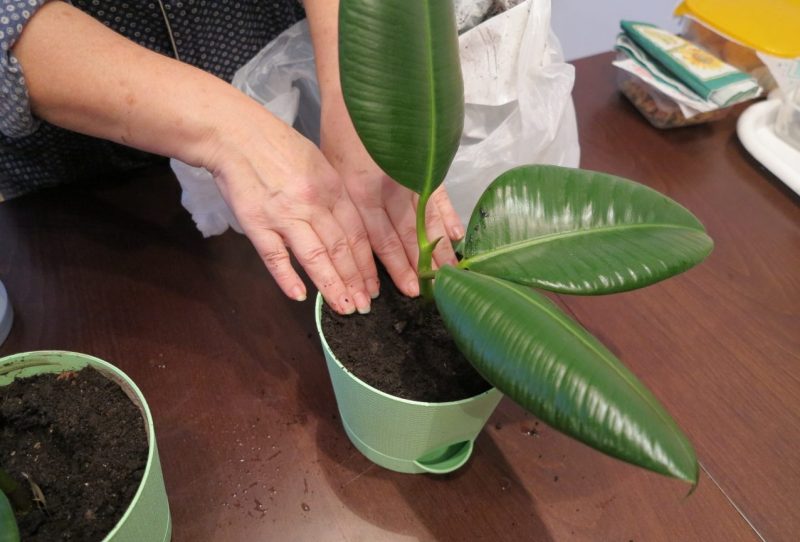
Caring for indoor ficus consists of timely watering, fertilizing, forming a crown, and protecting against pests. Top dressing can be done once every two weeks, but it is better to do this more often to provide the most favorable conditions for growing.
A plant can be given once a week 50% of the prescribed top dressing along with watering, using balanced complex fertilizer. For example, if it is recommended to give fertilizer 40 grams per 10 liters of water 2 times a month, then with weekly feeding, they give 20 grams per 10 liters of water. Reducing the amount and concentration, fertilizer is applied more often.
For top dressing, it is good to use a nitroammophoska containing potassium nitrogen and phosphorus in equal parts, and add preparations with trace elements.
Do I need a transplant after purchase
After buying a ficus, you need to think about how to form a crown, and be sure to transplant it. You need a slightly larger pot and fresh soil.
Read also:phalaenopsis: home care after the store
What you need to pay attention to when transplanting:
1. To prepare the soil substrate, buy, peat soil with neutral acidity (40%), humus (20%), sand (20%) and chernozem from the garden (20%).
2. You can just buy special soil for ficus.
3. Expanded clay is placed at the bottom of the pot for drainage.
4. It is advisable to pour sand on top of expanded clay so that the space between the stones does not fill up with time over time during watering.
5. The pot should be several centimeters larger than the volume of the root system.
When transplanting, the seedling is buried to 1 leaf, and fed with fertilizer with a high nitrogen content.
Then, cut off the top of a young ficus in 2 or 3 leaves. After the upper growth point of the main shoot is removed, the side buds in the axils of the leaf wake up, and the ficus grows in several trunks.
Plant propagation methods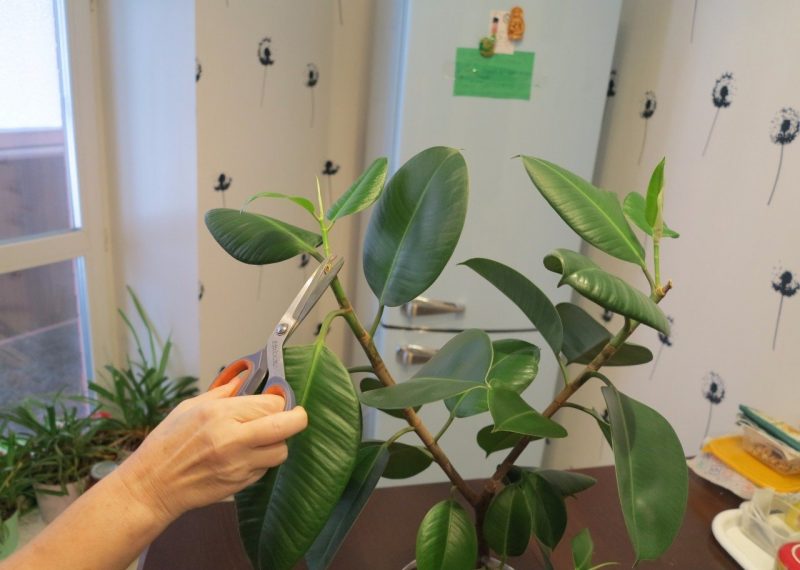
The rubbery ficus propagates only by the vegetative method. Each lignified process is perfectly rooted. It is enough that there are 2 leaves on the cutaway shoot.
The order of rooting in water:
1. After cutting the cuttings, milky juice begins to stand out. Cut branches are placed in water for half an hour to flush this sticky liquid.
2. Then, to reduce the evaporation area, cut the leaf plates on the cuttings to the middle.
3. On the trunk below the cuttings make 3 vertical scratches, about 2 cm long, this will facilitate the formation of roots.
4. Prepared cuttings put in a heteroauxin solution for a day.
5. You can root them in a container of warm water, on a warm battery, covering the top with a bag to create a greenhouse.
6. The rooting temperature must be at least +25 ° C.
7. The first roots should appear in 20 days.
Cuttings with small roots should be immediately planted in the soil.
First they are dipped in Kornevin powder, and then planted in a pot of earth, deepening by 3 or 4 cm. Before planting a plant, you need to make a hole in the ground so that delicate roots do not break off.
Having placed ficus in the soil (a mixture of peat and perlite), they compact all voids, watered with standing water with the addition of potassium permanganate and a root, and, if necessary, add more earth. Then cover with a bag on top, not wrapping tightly. They put in a warm, well-lit place. The temperature for further rooting must be at least 20 ° C.
Pest and Disease Control
In autumn, the plant may experience stress associated with changes in temperature and humidity, the leaves begin to turn yellow and become stained with the beginning of the heating season. At this time, ficus is most vulnerable to insect pests.
Most often, he is attacked by a spider mite, thrips and scab.
From thrips and ticks, the plant can be sprayed with a phytoderm, and you will have to tinker with the scale shield.
This insect is invisible to the eye, it is difficult to detect, it sticks to the leaves, and drinks juice from them. The appearance of a scale is indicated by an adhesive substance on the leaves.Sooty fungus often settles on the sticky secretions left by the insect. It clogs the pores of the plant and the leaves cannot breathe.
The scab has a dense brown carapace, so ordinary contact insecticides do not act on it.
It is necessary to use systemic drugs (Aktar, Confidor, Karate), which penetrate the plant tissue. At least two treatments are carried out with a short break.
What problems can the flower grower face?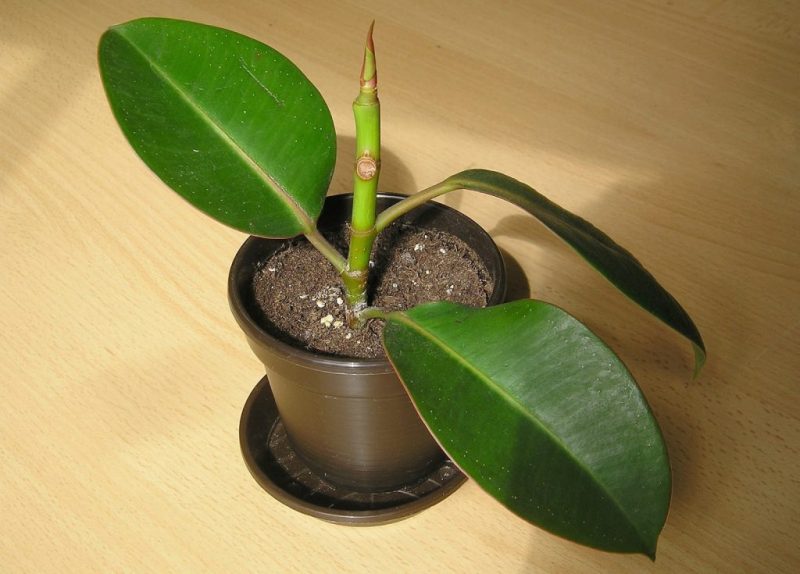
The most common problem with home growing is the “baldness” of the plant, when for some reason it begins to discard foliage.
1. The cause of leaf fall may be a lack of light at high temperatures in the summer. The higher the air temperature, the more light should be.
2. Leaves fall due to lack of nutrition.
3. When waterlogging the soil, the roots of the plant rot. An unpleasant smell starts to come from the ground, and the leaves begin to fall, the earthen lump does not dry out for a long time.
It is advisable to notice the problem and try to fix it right away. Rearrange the plant, feed or transplant into fresh ground.
It is interesting:rubber ficus care
Signs and superstitions associated with ficus robusta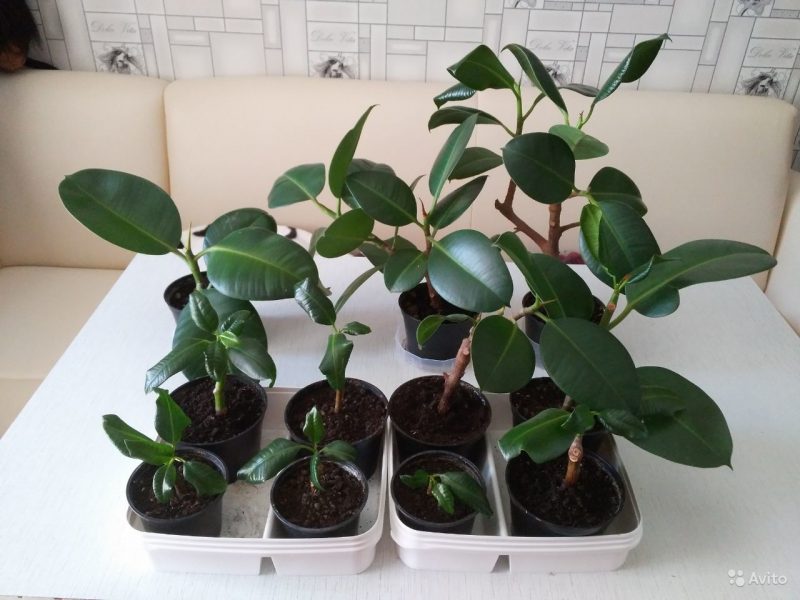
Ficus, like any houseplant, cleans the air of harmful substances and enriches it with oxygen, this is its great merit. If you believe in mysticism, then you can learn a lot of interesting things about ficus.
It is believed that this flower can help a woman if she wants to have a baby. Esotericists claim that the ficus of Robust brings prosperity and happiness into the house, absorbs all the negative emotions of the homeowners. You can talk with him, sharing your problems, transferring negative energy to him. The plant is able to cheer up, turning sadness into joy.
Even a beginner grower can grow a beautiful ficus at home if you follow the simple rules for caring for this plant.
Read also:rosemary: growing a house in a pot


